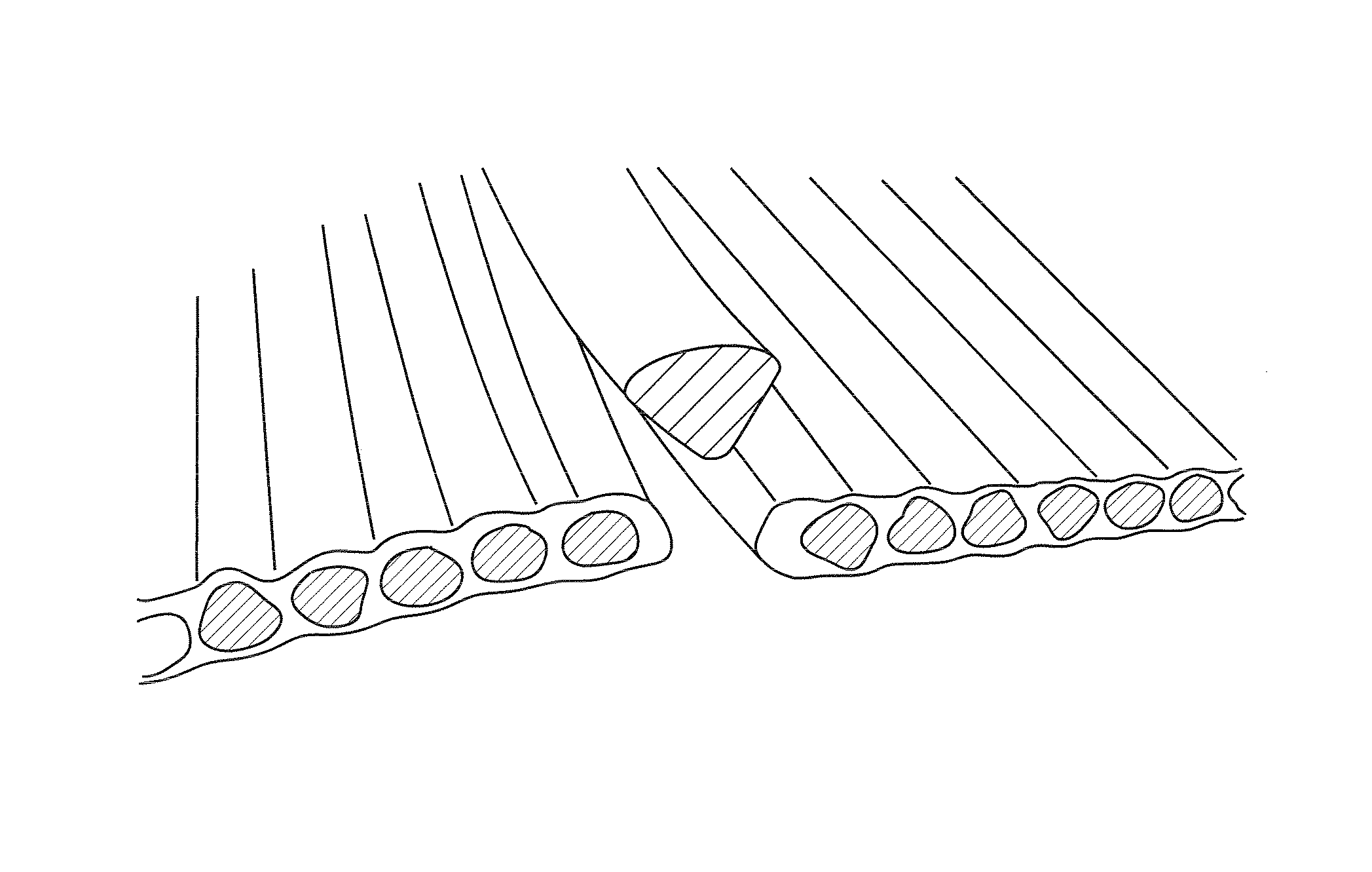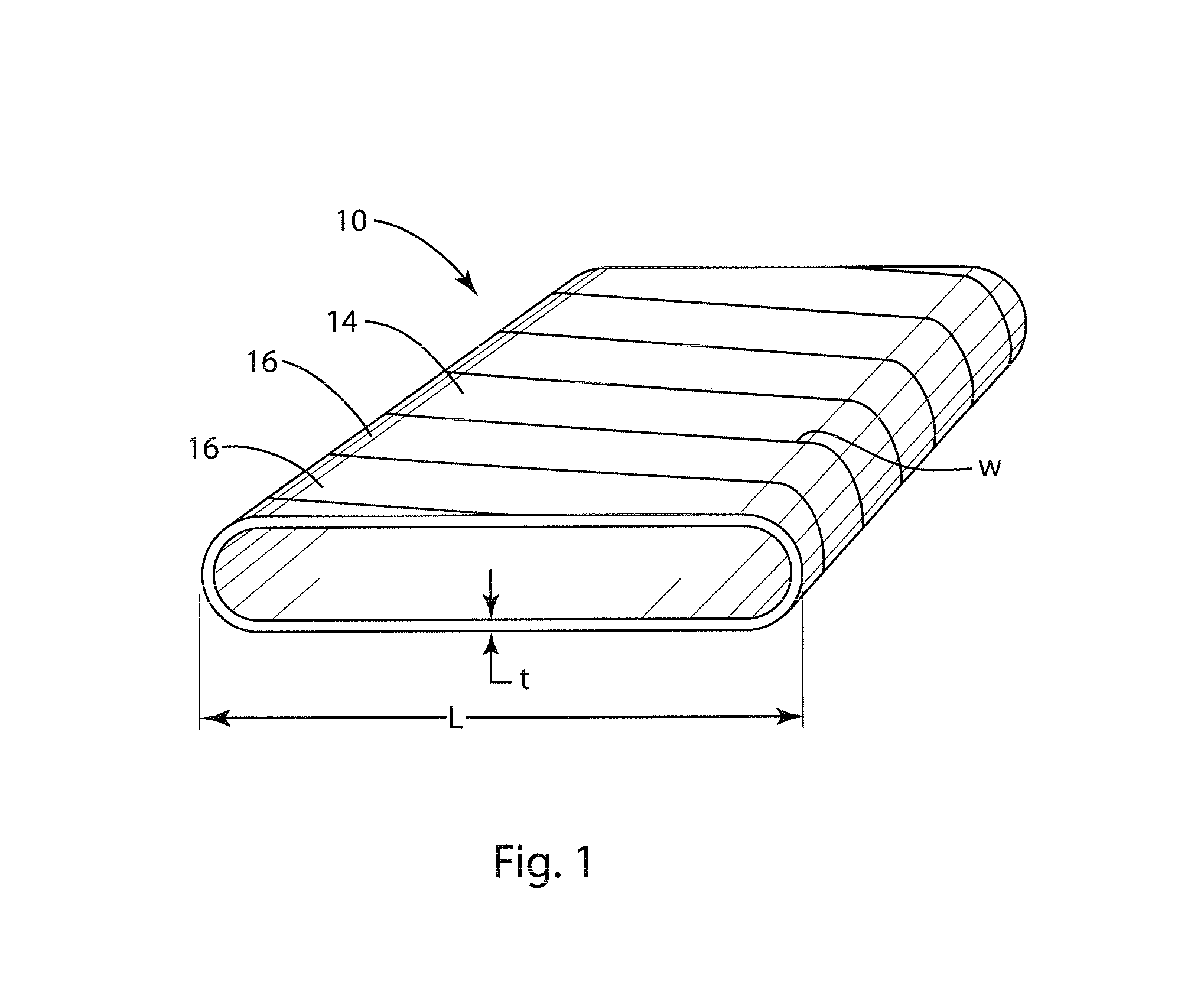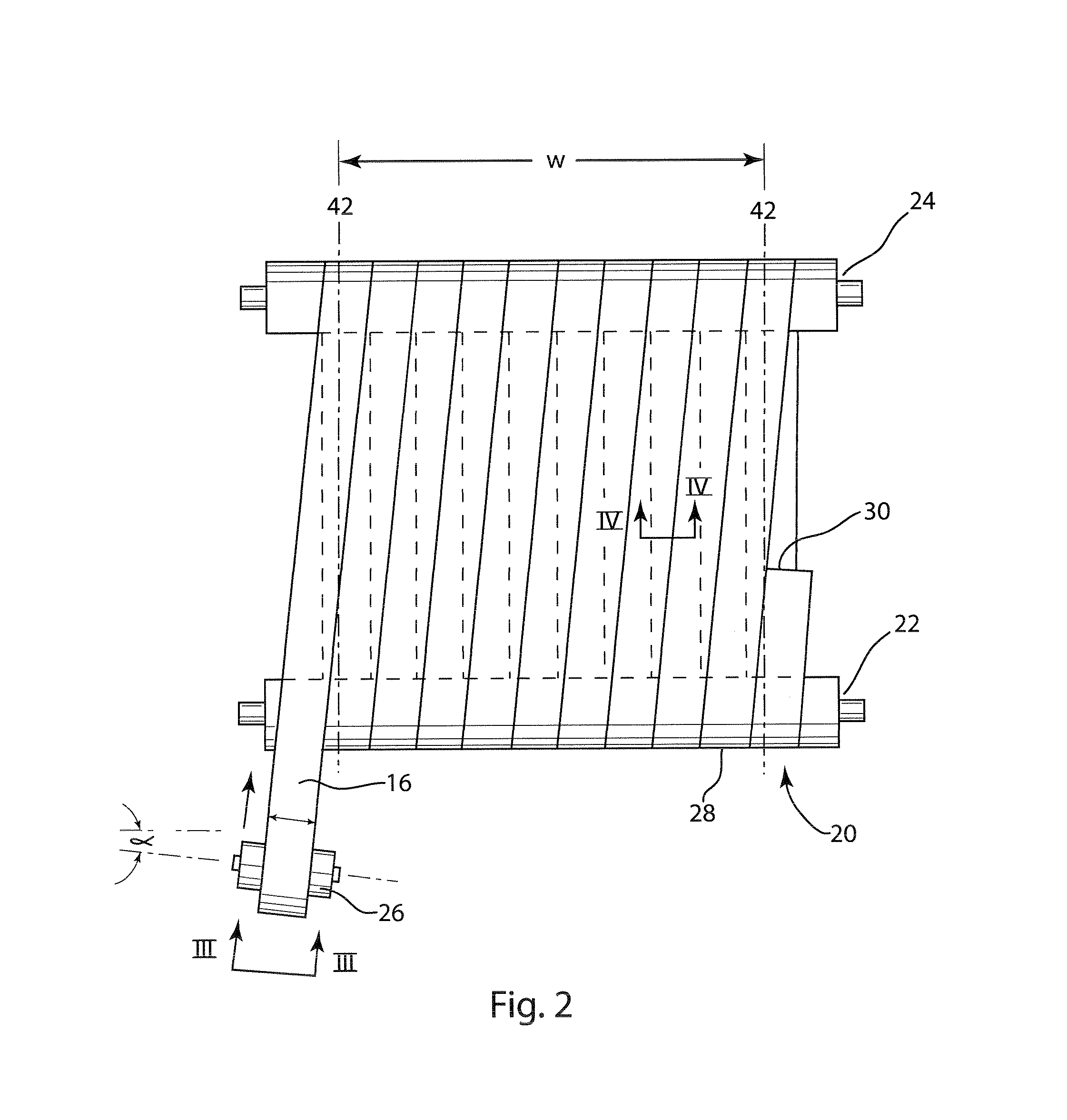Industrial fabric comprising spirally wound material strips and method of making thereof
a spiral wound, industrial fabric technology, applied in papermaking, other domestic articles, press sections, etc., can solve the problems of lack of dimensional stability, difficult to streamline the manufacturing process, and difficulty in producing a paper product entirely free of sheet marking, etc., to achieve effective patterning/texture, improve fiber support and release, and facilitate cleaning
- Summary
- Abstract
- Description
- Claims
- Application Information
AI Technical Summary
Benefits of technology
Problems solved by technology
Method used
Image
Examples
Embodiment Construction
[0050]Now turning to the figures, FIG. 1 is a perspective view of the industrial fabric, belt or sleeve 10 (hereinafter merely “industrial fabric” or “fabric”) of the present invention. The fabric 10 has an inner surface 12 and an outer surface 14, and is produced by spirally winding a strip of polymeric material 16, for example a polymeric ribbon, in a plurality of abutting and mutually adjoined turns. The strip of material 16 spirals in a substantially longitudinal direction around the length L of the fabric 10 by virtue of the helical fashion in which the fabric 10 is constructed.
[0051]An exemplary method by which the fabric 10 may be manufactured is illustrated in FIG. 2. Apparatus 20 includes a first process roll 22 and a second process roll 24, each of which is rotatable around its longitudinal axis. The first process roll 22 and the second process roll 24 are parallel to one another, and are separated by a distance which determines the overall length of the fabric 10 to be ma...
PUM
| Property | Measurement | Unit |
|---|---|---|
| width | aaaaa | aaaaa |
| thickness | aaaaa | aaaaa |
| diameter | aaaaa | aaaaa |
Abstract
Description
Claims
Application Information
 Login to View More
Login to View More - R&D
- Intellectual Property
- Life Sciences
- Materials
- Tech Scout
- Unparalleled Data Quality
- Higher Quality Content
- 60% Fewer Hallucinations
Browse by: Latest US Patents, China's latest patents, Technical Efficacy Thesaurus, Application Domain, Technology Topic, Popular Technical Reports.
© 2025 PatSnap. All rights reserved.Legal|Privacy policy|Modern Slavery Act Transparency Statement|Sitemap|About US| Contact US: help@patsnap.com



